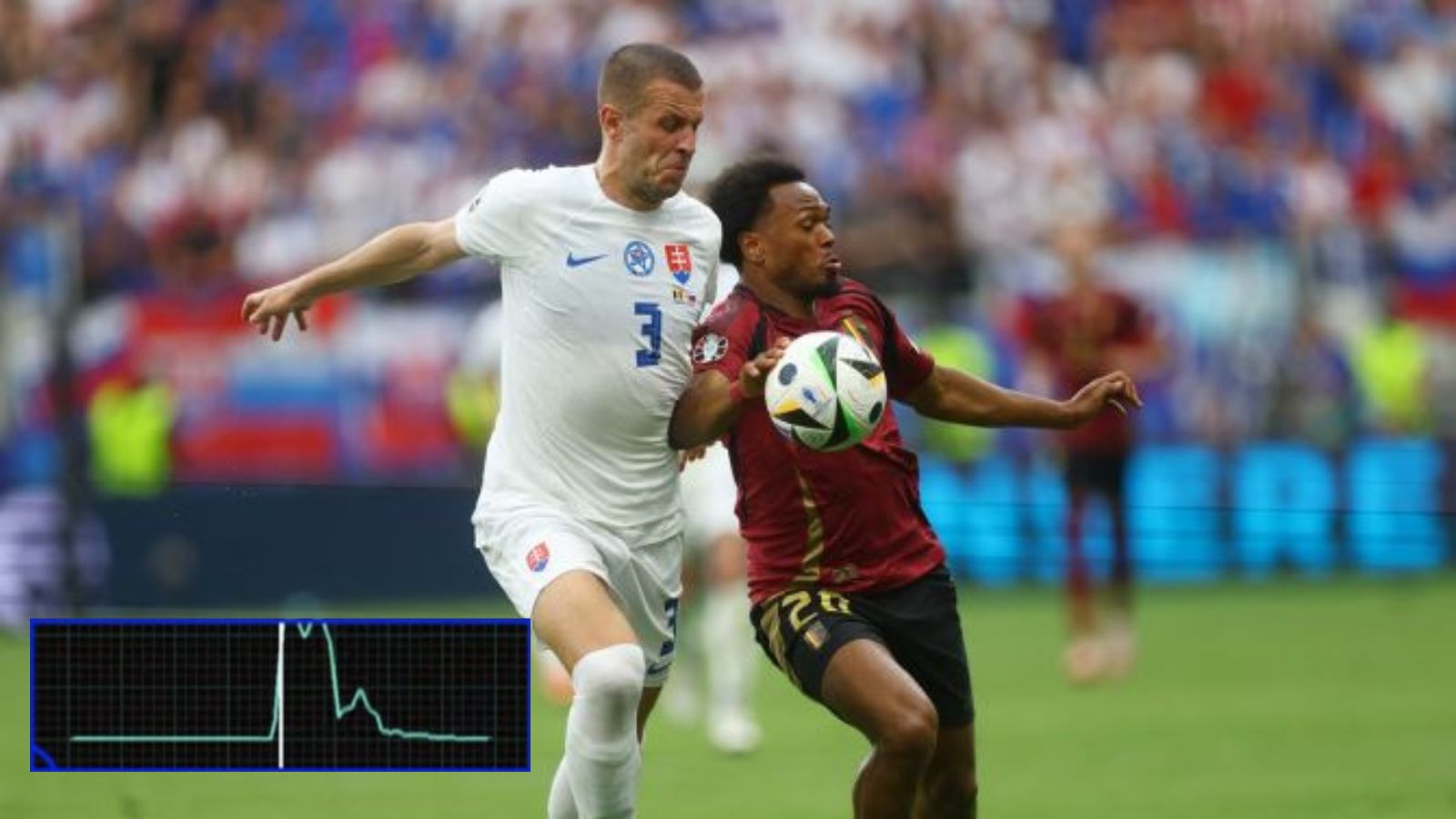It was what denied Belgium’s Romelu Lukaku an equaliser against Slovakia on Monday. Football has taken a page out of the cricket tech book by introducing the snicko technology to determine decisions pertaining a handball.
The addition however, has resulted in stirring reactions from many in the football community after it’s debut on Monday. While many purists have deemed the extensive use of technology – compounding on the VAR meltdown – some fear it’s addition may do little when it comes to the vague nature of the handball law.
How does it work?
A motion-sensing microchip is placed within the Adidas balls used at the tournament. Every touch at a rate of 500 times a second can be tracked by the ‘connected ball’ tech.
Upon VAR check, the snicko graphic – similar to the snickometer cricket has relied for years – is used to determine the exact moment a ball is touched.
What was its debut incident?
The first decision using the new technology was made on Monday during Belgium’s 1-0 loss against Slovakia. In the 86th minute, as Romelu Lukaku put the ball in the back of the net, the Belgian celebrations were cut short as the referee ran over to the sidelines to review the play in the build up to the goal.

The footage of Lois Openda involved in a possible handball was reviewed extensively. The snicko indicated a spike as it seemed to make a contact with Openda’s arms and the referee denied Belgium an equalizer. This, after Lukaku had already been denied a goal following an off-side check from the VAR.
What have been the reactions?
On BBC, former England international turned broadcaster Gary Lineker didn’t hold back from letting his thoughts known after the use of the tech led to another handball controversy, labelling the incident as ‘b****hit’.
Former Premier League striker Chris Sutton called it “scandalous. It is ridiculous, it really is. Openda doesn’t intentionally push the ball into his path. That is harsh. In the Premier League, that goal would stand.”
Former Australia international Scott McDonald mulled over the tech, which he termed as a ‘waste of money’.
“Look, I don’t know any more. It’s hard to say goal, no goal, then even having Snicko… what a waste of money that is. We can see on the video anyway it was a clear handball,” he said on Optus Sport.
What is the handball law?
Per International Football Association Board (IFAB), world body charged with setting, overseeing, and altering football’s laws, handball is an offence if a player:
- deliberately touches the ball with their hand/arm, for example moving the hand/arm towards the ball
- touches the ball with their hand/arm when it has made their body unnaturally bigger. A player is considered to have made their body unnaturally bigger when the position of their hand/arm is not a consequence of, or justifiable by, the player’s body movement for that specific situation. By having their hand/arm in such a position, the player takes a risk of their hand/arm being hit by the ball and being penalised
- scores in the opponents’ goal:
- directly from their hand/arm, even if accidental, including by the goalkeeper
- immediately after the ball has touched their hand/arm, even if accidental
Does intent matter?
It’s the use of the word ‘deliberate’ that has led to the noise around the particular law and how its cases are handled in football. It is crucial to note that while the ‘intent’ of a player does not matter when it comes to the decision-making with regards to a handball, a particular exception has been the matter of contention.
The rule for defenders does make an exception if the contact made by the player is “a consequence of, or justifiable by, the player’s body movement for that specific situation.” For instance, if a defensive player makes a sliding tackle – using his hand against the ground – to block the ball, which then touches his arm, a handball won’t be whistled.
If a goal-scorer makes contact with the ball in the lead up to the goal, it will be deemed as handball. However, for an attacking player – other than the scorer – who is involved in the build-up play to a goal, the handball decisions shall be made considering whether it was ‘deliberate’ or not.
© IE Online Media Services Pvt Ltd
First uploaded on: 18-06-2024 at 18:54 IST



